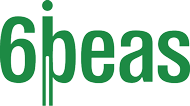The COVID-19 pandemic has resulted in massive disruption in a short period of time to not only the business world but the daily lives of millions of people.
The reality of this new normal is what Professor Rita McGrath would define as an inflection point — an external change that causes the underlying assumptions of a business to adjust dramatically in response. It occurred after 9/11, after the global financial crisis, SARS, and many other events in the last decade or two. What is common after an inflection point is the uncertainty that surrounds business and daily lives.
 The human brain hates uncertainty. The human brain is in a constant state of anticipation. From one moment to the next, it’s working away at predicting what should be happening next and anticipating the consequences, both good and bad, of those happenings. It is also constantly calculating the odds of those good or bad consequences. Whilst we are trying to predict outcomes and the odds of them occurring, our brain utilises vast amounts of energy attempting to resolve the ambiguity and uncertainty. This often causes anxiety and stress in our decision makers /leaders and given that emotions are contagious – this can lead to detrimental effects both at home and the office.
The human brain hates uncertainty. The human brain is in a constant state of anticipation. From one moment to the next, it’s working away at predicting what should be happening next and anticipating the consequences, both good and bad, of those happenings. It is also constantly calculating the odds of those good or bad consequences. Whilst we are trying to predict outcomes and the odds of them occurring, our brain utilises vast amounts of energy attempting to resolve the ambiguity and uncertainty. This often causes anxiety and stress in our decision makers /leaders and given that emotions are contagious – this can lead to detrimental effects both at home and the office.
So, as leaders/advisors, it is important to find ways to create as much certainty as possible to allow for critical decision making, assist with social intelligence, attentional intelligence and emotional intelligence. All of the things we need to make decisions, apply critical thinking and to collaborate effectively.
We use up vast amounts of energy in prediction and whilst we may not be able to provide absolute certainty, the Circle of Certainty can assist in the following areas:
1. Help people to focus their attention where it matters most
2. Reduce anxiety during highly stressful situations
3. Creating a foundation for prediction modelling or scenario modelling
4. Reframing of situations to give us the room we need to think clearly
5. Work with others in our team to reduce their anxiety
6. To match tasks to those who are more comfortable working in areas where uncertainty is the norm.
The Circle of Certainty is a model (Ray 2014) which was inspired by the circle of concern/circle of influence work of Steven Covey (2004). It’s a model that can be particularly helpful in situations of uncertainty.
Certainty in the workplace
• Employee engagement/ collaboration: Because it involves ‘chunking’, it is especially useful for people with a high need for certainty, in that it separates issues and concerns they have direct control over from those they can only influence or have no control over whatsoever.
• Matching people to tasks/Productivity: It is a great tool to assist leaders ensure that the right employees are working on the tasks within their comfort zone
• Inputs into predictive modelling: Identifies areas that influence, or are inputs into scenario testing
• Cognitive diversity/Collaboration: Allows you to identify across and throughout the organisation that provide diverse views to engage in modelling in the less certain space.
• Reward/Safe place: Grounds people so that you are not overwhelmed when you start to do scenario testing.
• Strategy: Provides a basis of certainty to build your new SWOT under a new external environment.
How to use the Circle of Certainty
 The circle of certainty can be used for those who are mentoring others, for personal reflection and reframing and to guide an organisation into scenario or predictive modelling or to assist with employee development or to help students cope with exam and assessment stress and fatigue. There are so many uses that I am sure as you use the model and as you engage with others you will find many other situations to use the circle of certainty.
The circle of certainty can be used for those who are mentoring others, for personal reflection and reframing and to guide an organisation into scenario or predictive modelling or to assist with employee development or to help students cope with exam and assessment stress and fatigue. There are so many uses that I am sure as you use the model and as you engage with others you will find many other situations to use the circle of certainty.
The inner circle relates to elements we have control over.
The middle circle relates to things we have some certainty about.
The outer circle relates to the unpredictable
Begin in the innermost circle and have team members identify everything they have absolute certainty about and write these down until you have exhausted all possibilities.
When asking these questions you could look at relationships, customers, family, finances, employees, skillsets, strengths, networks, resources, premises, and capabilities within the organisation, leaders, employees.
In the middle circle ask team members to identify what the team has some certainty about and write these down again until you have no further ideas.
The outermost circle represents the area where there is no certainty or predictability. Have team members identify everything about an issue, situation or challenge where there is no certainty and again do this until you have exhausted all possibilities.
Then, ask team members to identify what percentage of time people are spending their limited energy in each of these circles.
Generally, it is the middle area that can make the difference, the point where you can act to change course or influence the outcome. Since the brain is always seeking certainty, being aware of this ‘sphere of influence’ can come in handy.
The outer circle provides a basis and inputs into your predictive modelling scenarios.
1. Business: To move people into a “safer” more reward state around personal tasks:
• Ask them where time is best spent.
• Allow them to focus on the inner circles and gain some success before tackling other projects
• Use collaborative settings and diverse thinking as you move into the outer circles.
2. Business: To start prediction modelling/scenario testing
• Create some grounding and test assumptions.
• Go through each of the stages ie inner circle if rent is certain – question – have you had a conversation with your landlord about reducing your rent?
• As you move from the inner to outer circles do this with employees – those who are very task and “certainty” oriented may need to go through this process and have them working more on tasks in the inner circle.
• Matching employees to skillsets and capabilities – have you got the right people working on the right tasks in the organisation.
• When you have the basis of what you do have certainty and some certainty over, it is then a lot easier to move into predictive modelling or scenario testing. (keep in mind that it is easy to move to preference modelling instead of predictive modelling ie you focus on strategies around your preference and not all the different scenarios)
Customer User examples:
Broken down by specific challenges:
A business owner with over $5million in revenue and eight employees was “paralysed” in their decision making around employees, finances, expansion plans and marketing. With no certainty about when restrictions would lift, the behaviour of consumers post restrictions, or the balance of employees required – it was all a bit too much.
We used the Circle of Certainty to look at this from a financial perspective. Asking what do we have absolute certainty over, what are we not sure of, what do answers do we need to seek, where do we get these answers, who needs to be involved? We then did the same with regards to the employees within the business and again from a customer strategy perspective.
At each circle it is good to test assumptions of certainty as we might find that there are answers to explore. When you have a solid foundation in the inner circles it is easier to proceed to the outer circle to commence prediction modelling or scenario testing.
Let me know if you have any success with using this model. I would love to hear some additional examples. It works with students studying for exams also!
Carolyn is the founder of 6peas marketing and engagement. Our purpose is to create “aha” moments with business leaders by translating learnings in neuroscience into strategies and solutions that focus on our people – employees, customers and leaders.
At 6peas, we focus on 6pillars of growth – Leadership, Customer Centricity/Experience Management, Building a Culture of Psychological Safety I Employee engagement I Purpose I Brand, and Governance

